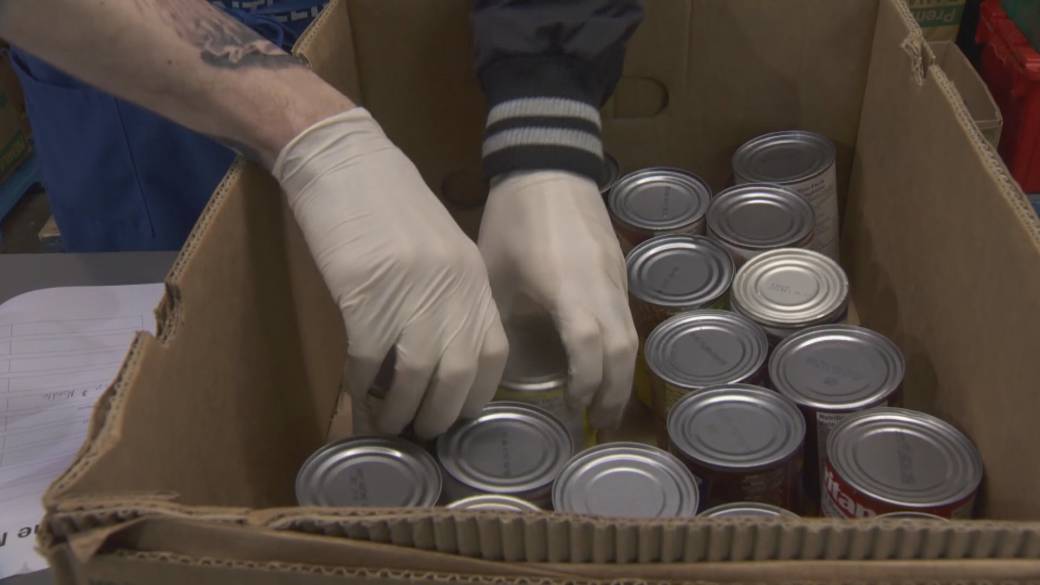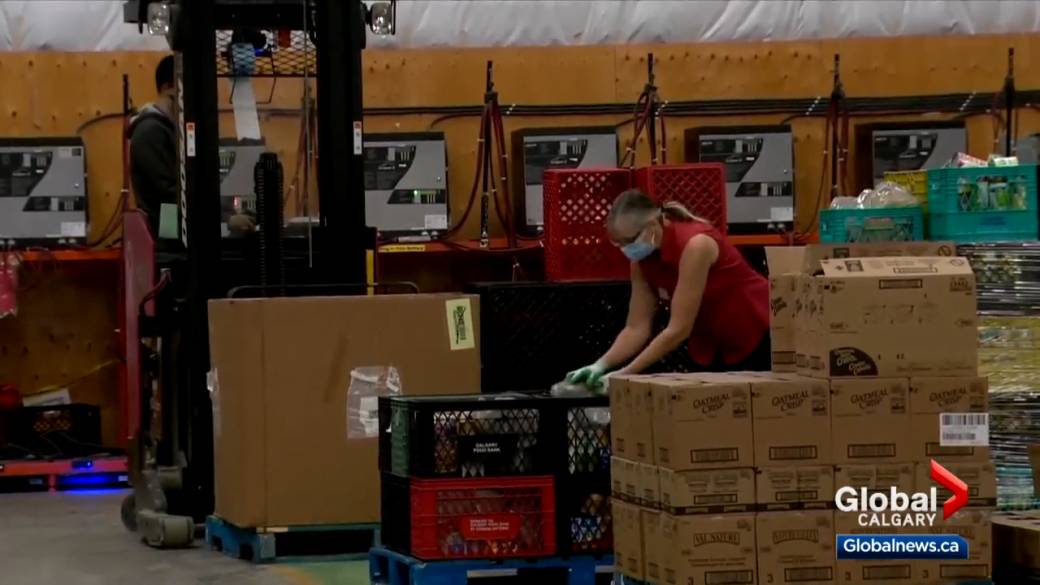Food banks across the country are bracing for a “tidal wave” of new customers in the coming months, as a new report sheds light on the heavy economic toll the pandemic has inflicted on Canadians.
Canadian food banks HungerCount 2021 The report shows that visits to food banks increased 20 percent nationally since the arrival of COVID-19, with one in four locations experiencing a 50 percent increase in demand.
“We have a fundamental decision to make, go back to a ‘pre-pandemic’ cycle of poverty or build a better Canada where no one goes hungry and poverty is tackled at its roots,” said David Armor, Acting Executive Director of Food Banks Canada, in a Press release.
Read more:
Manitoba food banks to receive more than $ 414 thousand in food after ‘increased demand’
“At the beginning of the pandemic, government housing and income support helped flatten demand at Canada’s food banks, but in recent months, visits are starting to increase, with nearly one in seven banks of food saw a doubling of demand, and visits to food banks skyrocketed in Quebec, Alberta and Ontario. “
The report shows that in March 2021, visits to food banks exceeded 1.3 million, the largest increase since the 2008 recession.
A third of those who had access to food banks were children, 8.7% were elderly and half received social assistance or disability-related supports.
Although the situation has improved somewhat in Manitoba since the “lean times” at the beginning of the pandemic, Harvest Manitoba says the national figures are consistent with what is happening locally.
Read more:
Winnipeg Harvest becomes Harvest Manitoba in merger with food bank association
“Before the pandemic started, Harvest Manitoba was seeing something on the order of 60,000 clients that we serve across the province every month; half of them are children, ”says Vince Barletta, Manitoba Harvest president and chief executive officer.
“Since COVID started and on a sustained basis, those numbers have been around 80,000 per month.”
Barletta says they can meet the demand “thanks to the generosity of Manitobans,” but right now, that support is needed more than ever.
“(There are) no signs that it is going to decrease, and even beyond that, the numbers that we are really looking at right now are inflation numbers,” says Barletta.
“I think anyone shopping for a cart full of groceries or a tank of gas or checking their home heating bills can attest that the prices of almost everything are going up.
“And if you were a person on a fixed income, as many people who use Harvest Manitoba do, every dollar in your budget counts.”

In the Food Banks of Canada report the top reasons for accessing a food bank are listed in order as: cost of food, too low assistance / benefits, and cost of housing.
The authors make five recommendations, including a call for new supports for low-income tenants, expanding supports for unemployed or low-wage workers, and improved measures specifically to address food insecurity in the North.
“If there is a silver lining in the first year of the pandemic, it is that we witnessed in real time what the Food Banks of Canada have been saying for years: good social policies can have a significant impact on reducing the food insecurity when they address its root causes, which are low income and poverty, ”the report reads.
“As our data has shown, the rapid introduction of CERB (Canada Emergency Response Benefit) and other supports initially ‘flattened the curve’ of food bank use early in the pandemic in many parts of the country.”

On the other hand, the report says that the percentage of people accessing food banks who identified as indigenous fell by almost half between 2019 and 2021, falling from 15 to 8 percent.
And while total visits to food banks increased, the number of people in rural areas using their services fell by 3.8 percent.
Back in Manitoba, Barletta says they always need food, funds and volunteers, but the need grows this time of year.
“We really need a big push for volunteers to come into our facility and help pack those baskets, and those cash donations are also incredibly important … to make sure families and children have what they need before the holidays. “says Barletta.
© 2021 Global News, a division of Corus Entertainment Inc.
Reference-globalnews.ca